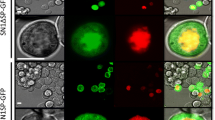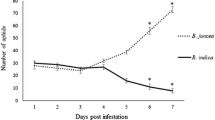Abstract
A novel antifreeze protein AFP72 cDNA (GenBbank accession No. AY929389) was obtained by RT-PCR from Tenebrio molitor. The 216 bp fragment encodes a protein of 72 amino acid residues. Sequence analysis revealed that the cDNA displays a high degree of homology with T. molitor antifreeze proteins, ranging up to 90.78%. Recombinant plasmids pMAL-p2X-afp72 and pMAL-c2X-afp72 were transferred into E. coli TBI to induce a MBP fusion protein by IPTG. The target fusion protein was released from the periplasm and cytoplasm by the cold osmotic shock procedure and sonication respectively. The content of the fusion protein came up to 38.9 and 41.5% of the total dissolved protein, respectively. The fusion protein was purified through an amylose affinity column, and incised by factor Xa. Molecular sieve chromatography was used to achieve a high state of purity of the target protein. The purified target protein di splayed a single band in SDS-PAGE. The fusion protein was shown to increase resistance to low temperatures in bacteria. This finding could help in further investigations of the properties and function of antifreeze proteins.
Similar content being viewed by others
References
Raymond J.A., deVries A.L. 1997. Adsorption inhibition as a mechanism of freezing resistance in polar fishes. Proc. Natl. Acad. Sci. U. S. A. 74, 2589–2593.
Qiu L.M., Wang Y., Wang J., Zhang F., Ma J. 2010. Expression of biologically active recombinant antifreeze protein His-MpAFP149 from the desert beetle (Microdera punctipennis dzungarica) in Escherichia coli. Mol. Biol. Rep. 37, 1725–1732.
Fletcher G.L., Hew C.L., Davies P.L. 2001. Antifreeze proteins of teleost fishes. Annu. Rev. Physiol. 63, 359–390.
Duman J.G. 2001. Antifreeze and ice nucleator proteins in terrestrial arthropods. Annu. Rev. Physiol. 63, 327–357.
Muryoi N., Sato M., Kaneko S., Kawahara H., Obata H., Yaish M.W.F., Griffith M., Glick B.R. 2004. Cloning and expression of afpA, a gene encoding an antifreeze protein from the arctic plant growth-promoting rhizobacterium Pseudomonas putida GR12-2. J. Bacteriol. 186, 5661–5671.
Graham L.A., Liou Y.C., Walker V.K., Davies P.L. 1997. Hyperactive antifreeze protein from beetles. Nature. 388, 727–728.
Tyshenko M.G., Doucet D., Davies P.L., Walker V.K. 1997. The antifreeze potential of the spruce budworm thermal hysteresis protein. Nature Biotechnol. 15, 887–890.
Graham L.A., Walker V.K., Davies P.L. 2000. Developmental and environmental regulation of antifreeze proteins in the mealworm beetle Tenebrio molitor. Eur. J. Biochem. 267, 6452–6458.
Qin W., Walker V.K. 2006. Tenebrio molitor antifreeze protein gene identification and regulation. Gene. 367, 142–149.
Liou Y.C., Thibault P., Walker V.K., Davies P.L., Graham L.A. 1999. A complex family of highly heterogeneous and internally repetitive hyperactive antifreeze proteins from the beetle Tenebrio molitor. Biochemistry. 38, 11415–11424.
Liou Y.C., Tocilj A., Davies P.L., Jia Z.C. 2000. Mimicry of ice structure by surface hydroxyls and water of a β-helix antifreeze protein. Nature. 406, 322–324.
Yue C.W., Zhang Y.Z. 2009. Cloning and expression of Tenebrio molitor antifreeze protein in Escherichia coli. Mol. Biol. Rep. 36, 529–536.
Liu Z.Y., Zhang F.C., Wang T., Lu G.D. 2005. Expression of the antifreeze gene of a pyrochroid beetle Dendroides canadensis in prokaryote and detection of the protein biological activity. Acta Entomol. Sinica. 48, 179–183.
Zhao G., Ma J., Xue N., Yang C.G., Zhuan F.F., Zhang F.C. 2005. Cloning of a cDNA encoding antifreeze protein in Microdera punctipenis dzunarica (Coleoptera: Tenebrionidae) and its activity assay. Acta Entomol. Sinica. 48, 667–673.
Bar M., Bar-Ziv R., Scherf T., Fass D. 2006. Efficient production of a folded and functional, highly disulfidebonded β-helix antifreeze protein in bacteria. Prot. Exp. Purif. 48, 243–252.
Tyshenko M.G., d’Anjou M., Davies P.L., Daugulis A.J., Walker V.K. 2006. Challenges in the expression of disulfide bonded, threonine-rich antifreeze proteins in bacteria and yeast. Prot. Exp. Purif. 47, 152–161.
Sambrook J., Fritsch E.F., Maniatis T. 2000. Molecular Cloning: A Laboratory Manual, 3rd ed. Cold Spring Harbor, NY: Cold Spring Harbor Lab. Press.
Griffith M., Ewart K.V. 1995. Antifreeze proteins and their potential use in frozen foods. Biotech. Adv. 13, 375–402.
Younis A.I., Rooks B., Khan S. 1998. The effects of antifreeze peptide III (afp) and insulin transferrin selenium (its) on cryopreservation of chimpanzee (Pan troglodytes) spermatozoa. J. Androl. 19, 207–214.
Soltys K.A., Batta A.K., Koneru B. 2001. Successful nonfreezing, subzero preservation of rat liver with 2, 3-butanediol and type I antifreeze protein. J. Surg. Res. 96, 30–34.
Amir G., Rubinsky B., Kassif Y. 2003. Preservation of myocyte structure and mitochondrial integrity in subzero cryopreservation of mammalian hearts for transplantation using antifreeze proteins-an electron microscopy study. Eur. J. Cardiothorac. Surg. 24, 292–297.
Chao H., Davies P.L., Carpenter J.F. 1999. Effects of antifreeze proteins on red blood cells survival during cryopreservation. J. Exp. Biol. 199, 2071–2076.
Carpenter J.F., Hansen T.N. 1992. Antifreeze protein modulates cells survival during cryopreservation: Mediation through influence on ice crystal growth. Proc. Natl. Acad. Sci. U. S. A. 89, 8953–8957.
Marshall C.B., Daley M.E., Graham L.A. 2002. Identification of the ice-binding face of antifreeze protein from Tenebrio molitor. FEBS Lett. 529, 261–267.
Marshall C.B., Daley M.E., Sykes B.D. 2004. Enhancing the activity of a beta-helical antifreeze protein by the engineered addition of coils. Biochemistry. 43, 11637–11646.
Author information
Authors and Affiliations
Corresponding author
Rights and permissions
About this article
Cite this article
Yan, Qh., Yang, L., Wang, Q. et al. Cloning and expression of a novel antifreeze protein AFP72 from the beetle Tenebrio molitor . Mol Biol 46, 514–521 (2012). https://doi.org/10.1134/S0026893312030090
Received:
Accepted:
Published:
Issue Date:
DOI: https://doi.org/10.1134/S0026893312030090




